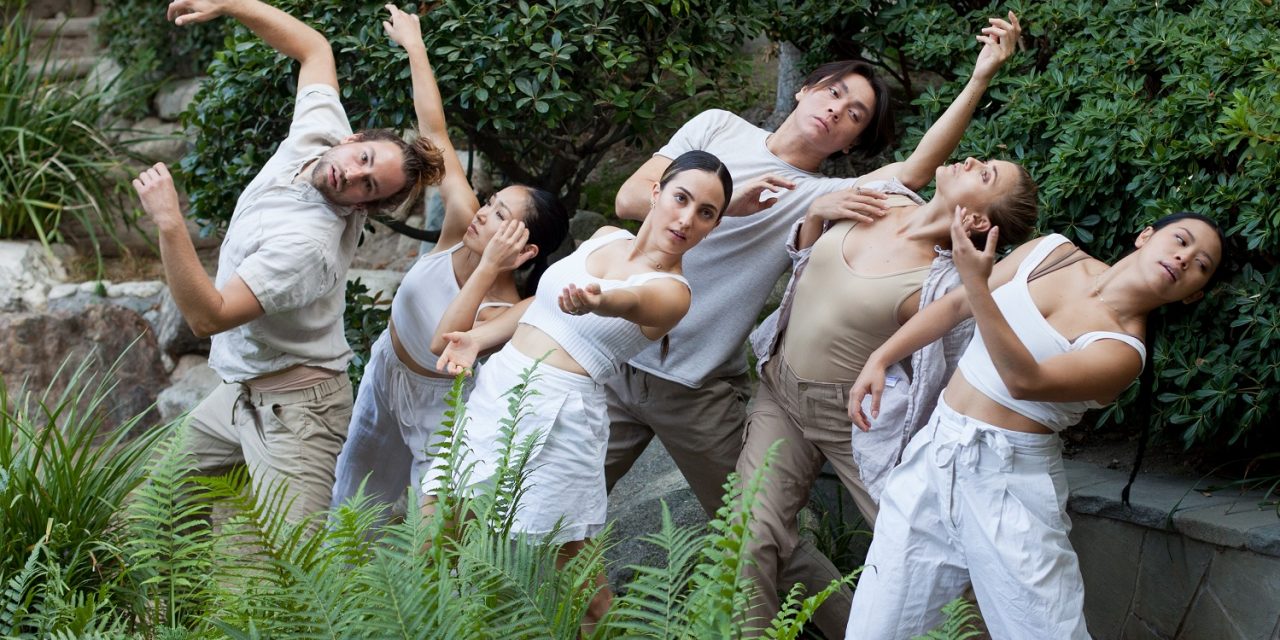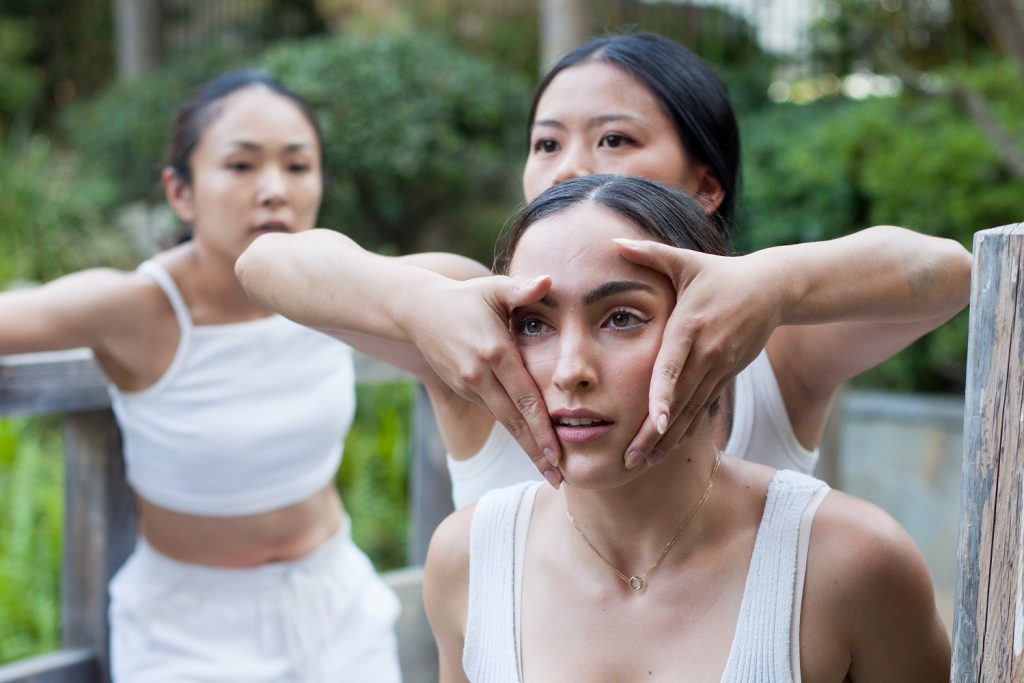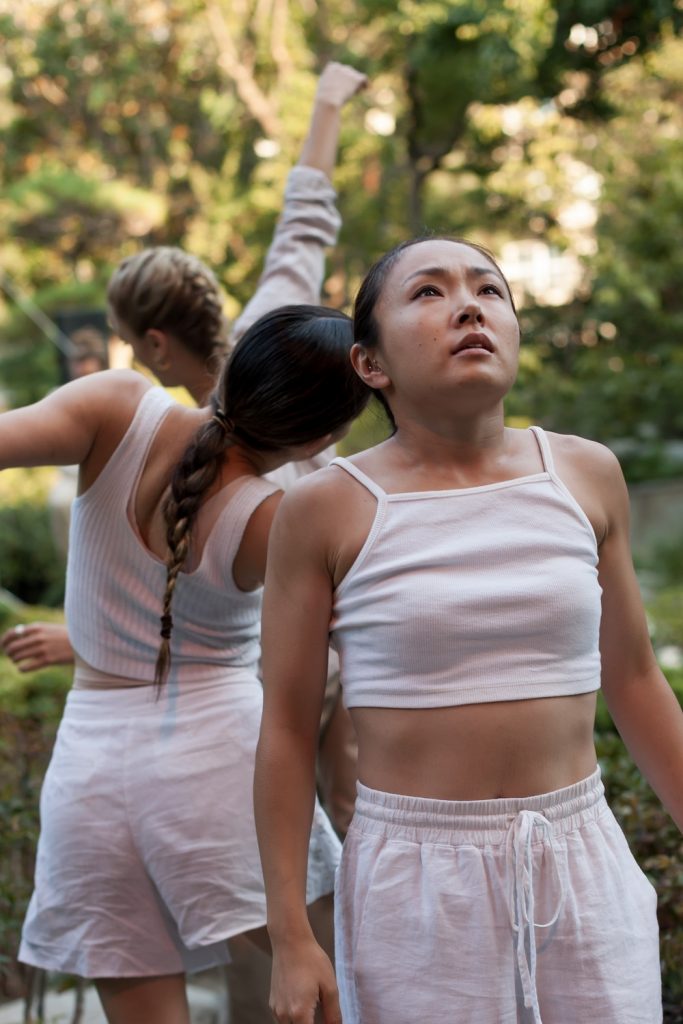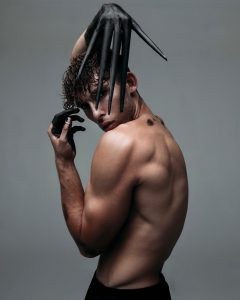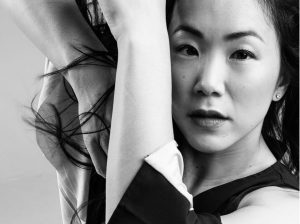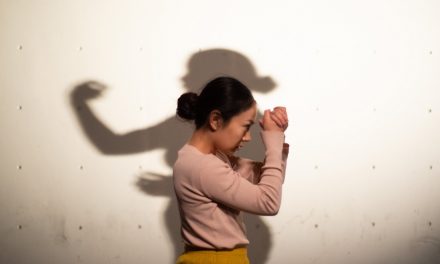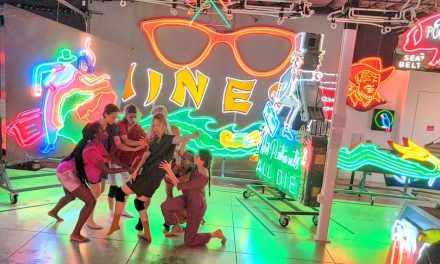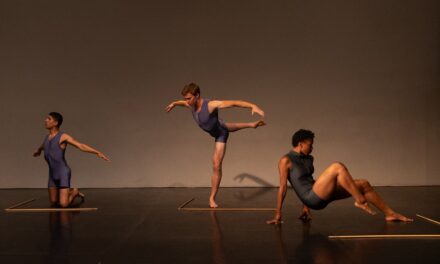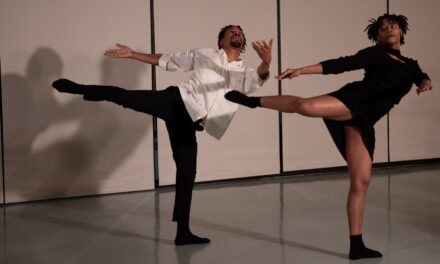Entity Contemporary Dance mounted their first live production in over a year on Friday, opening the show at the Japanese American Cultural & Community Center with a softly cathartic live work, then screening a variety of pandemic-borne film commissions. I know we’ve all seen our share of dance on film lately, and I had already seen quite a few of the works via social media. But to see a community come together on land that has housed so many populations and performances made the evening more than worth it.
Entity co-founders and co-directors Marissa Osato and Will Johnston choreographed the opening ensemble from here to there, a simple number molded nimbly to the James Irvine Japanese Garden. It felt like a gentle nudge, a reminder of Entity’s expert literacy in a custom-woven concert-commercial language.
Their work finds cleanliness in matched quality of movement and punctuation. Even after a long hiatus, the cast (Emily Crouch, Shiori Kamijo, Jason Martin, Grayson McGuire, Vickie Roan, and Eugenia Rodriguez) was breathtakingly daring on uneven ground. They moved with fearless abandon, fed by complete trust in each other and shared breath. Roan in particular commanded my attention, with a sort of laser curiosity in her eyes and a stunning commitment to every shift.
Karen Chuang’s sonder found its own footing in that pandemic prompt we all know: simplicity in isolation, just a camera and dancers on location. Long shots and expert editing from DP Nathan Kim lent sophistication to Chuang’s thoughtful tones, made comforting with stillness and pause. Entity can rely a bit heavily on gestures of the hands and face, but because they use them so often, they wield them well. I find these tools work best with clarity and subtle context, just how they’re dispatched in sonder.
Emily Crouch’s love her madly introduced to the screen a jazzy, pulpy rumination on power imbalance, with a dark and playful lens on madness. Fosse references and creepy camp from Kent Boyd opposite femme fatales Diana Schoenfeld and Angel Mammoliti elevated the scene. Crouch said later in the evening that the pandemic pushed her to go full steam ahead on this fledgling project, and it shows – it’s executed with confidence, and that’s what makes it work.
I had already seen Osato’s to peer through veils and reviewed it here, but there was something so eerily comforting about viewing it in its birthplace, the JACCC plaza and Isamu Noguchi’s To the Issei (1983), as well as historic Azusa Street.
Schoenfeld described her work beyond as primarily inspired by image distortion with prism work, particularly a glass of water. The visuals were beautifully tender, reminiscent of a 90s power ballad music video; I wanted a more climactic arc for a film this length.
Nina McNeely’s John L offered comedic and ridiculous respite from so much virtuosic work. Clips of the film are available on Instagram, but to see this work on a larger screen amplified her genius, exposing the detailed planning and placement put into the choreography and animation. McNeely said that if she knew the choreography was good, the rest could fall in place, and I swoon at the idea of the movement taking priority in a commercial project of this scale. It’s a testament to her intuition as a director and visionary, and it reads impeccably onscreen: if you haven’t, go watch.
Kamijo and McGuire co-helmed Can you Can Christmas, a goofy holiday timeline trip that almost makes that Zoomed-from-my-apartment quarantine aesthetic make sense. The film evoked pandemic boredom in that delirious way, but in its absurdity also opened new avenues for exploration without judgment, which is so welcome in a form that takes itself so seriously.
Johnston described his work chrysalis as a reversal of logic and inspiration, in that he and collaborator Jay Swuen used their resources to inspire the work on the spot rather than structuring an idea for film. Swuen’s projection and color work is well-done, and Johnston’s performance quality is in a league of its own – the imagery is powerful, and a few sequences have stayed with me since.
The show closed with McNeely’s second work, Once there was III. McNeely’s projections transformed Chuang, Mammoliti, and Schoenfeld with such grotesque grandeur; her ability to adapt her vision through a deep understanding of her cast is otherworldly. The musical drops were so affecting that audience members screamed, and to watch the film through Nathan Kim’s lens is like having a third eye that tells you where to focus.
I won’t spoil too much about these films, because Entity plans to make them available on-demand soon, and they’re worth the watch. Osato announced at evening’s end that their partnership with JACCC will continue, so keep an eye out for captivating work on the plaza, in the theater, and more.
To visit the Entity Contemporary Dance website, click HERE.
Written by Celine Kiner for LA Dance Chronicle.
Featured image: Entity Contemporary Dance – Cast of EntityFeatures – Photo by Camryn Eakes

